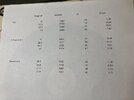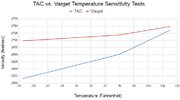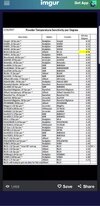Scout21
Member
I'm reading mixed reports on the temp sensitivity of TAC. Some say it's super sensitive and others say it's nearly as stable as Varget.
I'm wanting to load some 110 or 130 grain Barnes TTSX for my .308 Win. using LC brass and TAC because it seems to give great velocity compared to other listed powders. The problem is that I would like to use it for deer hunting where the temps could be anywhere from 20 degrees F to 80 degrees F, depending on the time of season. I'd also like to be able to use it for hog and coyote control on the farm year round, meaning potentially shooting in 100 degree F heat.
Is it feasible to have one load worked up to use year round using TAC, or am I better off sticking with Varget? I'm not looking for absolute pinpoint precision; keeping my groups within an inch relative to POA is fine by me.
I'm wanting to load some 110 or 130 grain Barnes TTSX for my .308 Win. using LC brass and TAC because it seems to give great velocity compared to other listed powders. The problem is that I would like to use it for deer hunting where the temps could be anywhere from 20 degrees F to 80 degrees F, depending on the time of season. I'd also like to be able to use it for hog and coyote control on the farm year round, meaning potentially shooting in 100 degree F heat.
Is it feasible to have one load worked up to use year round using TAC, or am I better off sticking with Varget? I'm not looking for absolute pinpoint precision; keeping my groups within an inch relative to POA is fine by me.






